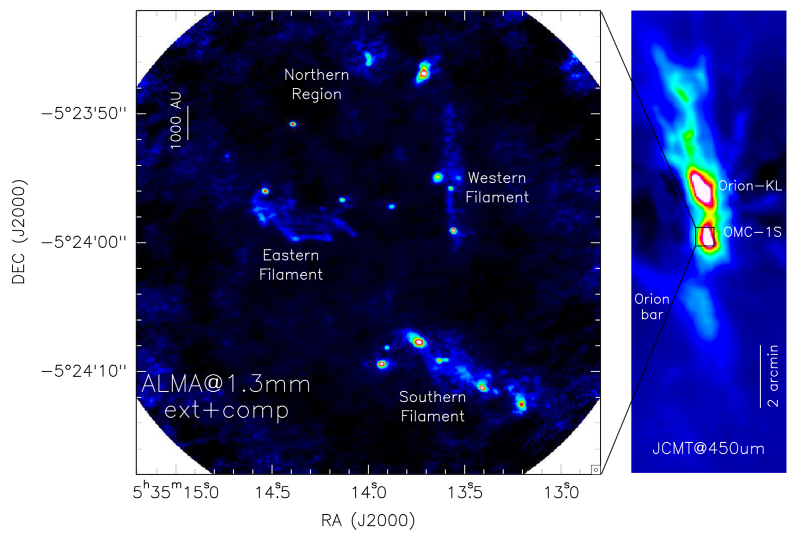| EPoS Contribution |
|
Fragmentation of Massive Dense Cores: from 0.1 to 0.01 pc
Aina Palau IRyA-UNAM, Morelia, MX | |
| An observational project aimed at studying the fragmentation of massive dense cores, which constitute the first stages of cluster and high-mass star formation, will be presented. The project is based on a sample of 19 massive dense cores which were observed in the millimeter range for fields of view of 0.1 pc, and down to mass sensitivities (~0.3 Msun) and spatial resolutions (~1000 AU) comparable to infrared/optical studies of clusters. Such a study unveiled different levels of fragmentation for the different cores. We inferred the density and temperature structure of the 19 cores, and found a possible trend of fragmentation increasing with density within a given radius. We also studied the relation of turbulence and fragmentation level and found no signs of a possible trend. On the contrary, the best correlations are found for the case of pure "thermal" Jeans fragmentation. Finally, recent ALMA results will be shown for one of the massive dense cores, revealing fragmentation down to scales one order of magnitude smaller, 0.01 pc. Our study suggests that gravity seems to be regulating the fragmentation process at least from 0.1 down to 0.01 pc scales. | |
 | |
| Caption: Left: ALMA 1.3 mm continuum emission for the OMC-1S region for extended+compact configurations. Rigth: James Clerk Maxwell Telescope (JCMT) at 450 μm from di Francesco et al. (2008) showing the large field of view where OMC-1S is embedded, in relation to Orion-KL and the Orion bar. The black square indicates de field of view of the ALMA data shown on the left panel. | |
| Collaborators: R. Estalella, UB, ES P.T.P. Ho, ASIAA, TW J.M. Girart, CSIC, ES A. Fuente, OAN, ES Q. Zhang, CfA, US A. Sanchez-Monge, U Koeln, DE G. Busquet, CSIC, ES B. Commercon, U Lyon, FR P. Hennebelle, CEA, FR E. Vazquez-Semadeni, IRyA-UNAM, MX J. Ballesteros-Paredes, IRyA-UNAM, MX L. Zapata, IRyA-UNAM, MX C. Roman-Zuniga, IA-UNAM, MX |
Key publication
Suggested Session: High-mass star/star cluster formation |

